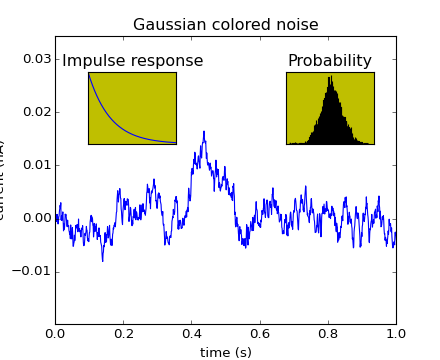
Learn what to expect in the new updates

(Source code, png, hires.png, pdf)

#!/usr/bin/env python
from pylab import *
# create some data to use for the plot
dt = 0.001
t = arange(0.0, 10.0, dt)
r = exp(-t[:1000]/0.05) # impulse response
x = randn(len(t))
s = convolve(x,r)[:len(x)]*dt # colored noise
# the main axes is subplot(111) by default
plot(t, s)
axis([0, 1, 1.1*amin(s), 2*amax(s) ])
xlabel('time (s)')
ylabel('current (nA)')
title('Gaussian colored noise')
# this is an inset axes over the main axes
a = axes([.65, .6, .2, .2], axisbg='y')
n, bins, patches = hist(s, 400, normed=1)
title('Probability')
setp(a, xticks=[], yticks=[])
# this is another inset axes over the main axes
a = axes([0.2, 0.6, .2, .2], axisbg='y')
plot(t[:len(r)], r)
title('Impulse response')
setp(a, xlim=(0,.2), xticks=[], yticks=[])
show()
Keywords: python, matplotlib, pylab, example, codex (see Search examples)